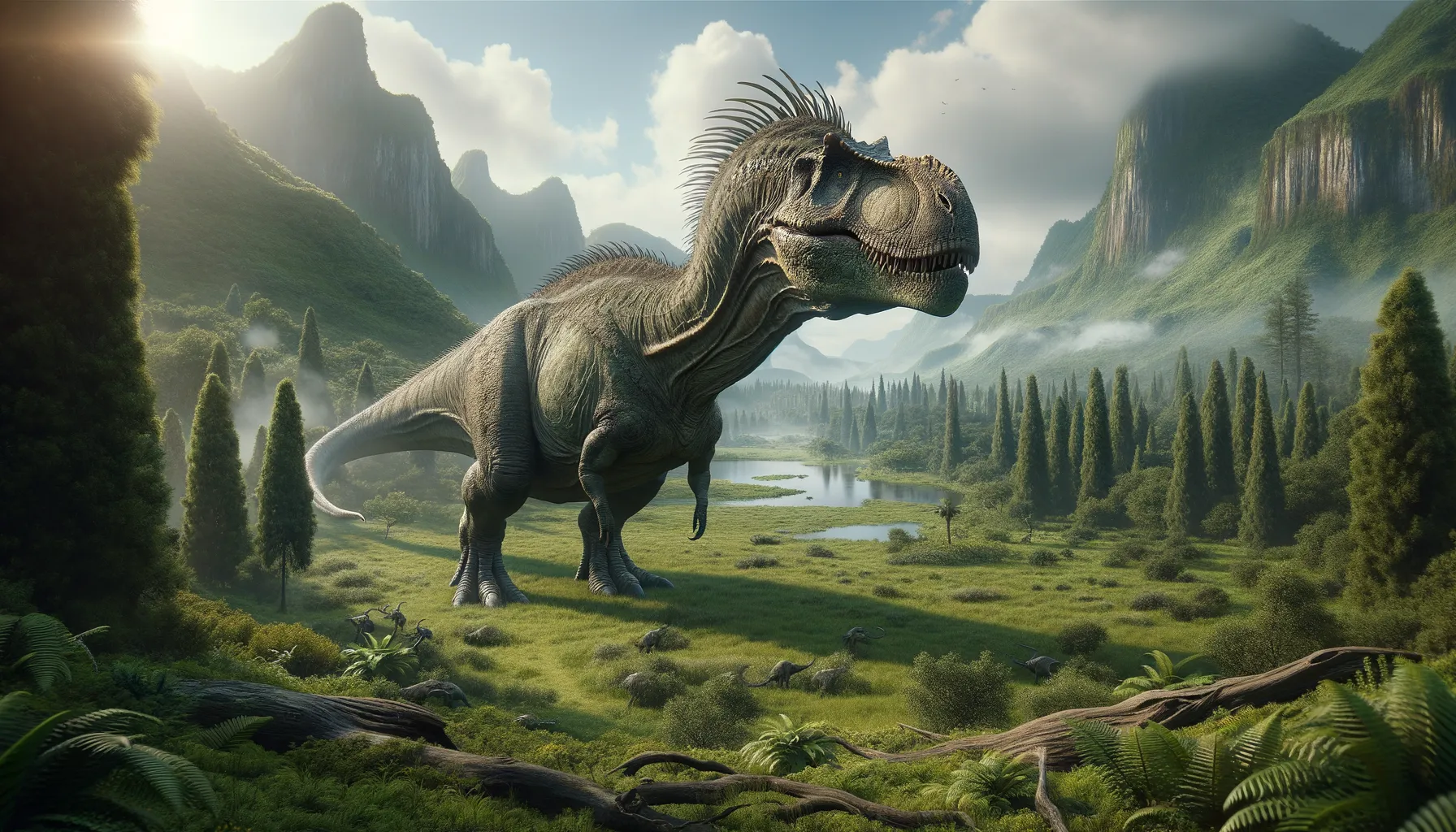
Europatitan
Discover the giant that roamed Europe!
Period
Cretaceous
Length
Approximately 82 to 98 feet long.
Height
Estimated up to 50 feet at the shoulder.
Weight
Around 44,000 pounds, or 20,000 kilograms.
Europatitan was a colossal sauropod dinosaur that roamed Europe during the Early Cretaceous period. Known for its massive size and elongated neck, this gentle giant was discovered in Spain. It represents one of the largest dinosaurs found in Europe, providing valuable insights into the diverse ecosystems of the past. Its fossils help paleontologists understand sauropod diversity and distribution during a time when Europe was a series of islands.
Diet
Europatitan was a herbivore primarily feeding on plants. It likely used its long neck to reach high vegetation or sweep low shrubbery. This diet supported its immense size and energy needs.
Hunting
Europatitan did not hunt as it was herbivorous. It lived by foraging and leisurely browsing for plants. Its vast size offered some protection from predators, reducing the need for speed or stealth.
Environmental challenges
As an enormous land-dwelling creature, Europatitan faced challenges such as finding enough food to sustain its huge body. Dense forests or areas with limited vegetation would have posed significant survival hurdles. Climate conditions, such as droughts, might have affected their food supply, forcing them to migrate to find better grazing grounds.
Speed
Likely moved slowly due to massive size.
Lifespan
Estimated to live several decades.
First discovery
First discovered in Spain in 2017.
Fun Facts
- Europatitan is a massive sauropod dinosaur, known for its long neck, which roamed Europe about 125 million years ago.
- Its name, Europatitan, translates to 'European giant', reflecting its large size and discovery location.
- This dinosaur is estimated to have been around 35 meters long, making it one of the longest dinosaurs discovered in Europe.
- Europatitan belonged to the same group as other famous long-necked dinosaurs like Brachiosaurus and Diplodocus.
- The fossils of Europatitan were found in Spain, providing critical insights into the evolution of sauropods in Europe.
- Europatitan contributed to our understanding of how sauropods spread and adapted to different regions during the Early Cretaceous period.
Growth and Development
Europatitan would have experienced rapid growth in its juvenile years to reach adulthood quickly. This rapid growth was necessary for survival, as larger size offered protection from predators. Fossils indicate that growth rings in their bones are similar to trees, revealing age and growth rate. Their development was significant in understanding how these creatures achieved such enormous sizes.
Habitat
Europatitan thrived in lush, semi-tropical environments with abundant vegetation. It likely lived in areas where water sources like rivers and lakes were present. These habitats consisted of a mixture of open plains and forested regions, providing a range of food options. As a land animal, it adapted well to terrestrial life but required sources of water regularly for hydration.
Interaction with other species
Europatitan coexisted with various other dinosaur species, both herbivores and carnivores. Its massive size made predators think twice before attacking. It likely moved in herds, providing safety in numbers from smaller carnivorous theropods. Its presence in the ecosystem contributed significantly to the landscape through grazing patterns, possibly affecting the distribution of vegetation.
Natural lifespan
Europatitan likely lived for several decades.
Reproduction
Europatitan reproduced by laying eggs like other sauropods. It is presumed to have nested in colonies, which provided some protection for the young. Hatchlings were much smaller and grew rapidly to avoid predation. Parental care is likely limited, with young left to fend for themselves after hatching.
Social behaviour
Europatitan likely exhibited herd behavior to some extent, giving them security from predators. Communication within the herd might have been through vocalizations or physical gestures. This social dynamic helped them to migrate effectively when searching for new feeding grounds. Such behavior also allowed individuals to seek mates, supporting their reproductive needs.
Fossil locations
Europatitan fossils have been primarily found in Spain, contributing to our understanding of Cretaceous Europe. These discoveries are significant in noting regional variations in dinosaur species during this time. The site in Spain reveals a wealth of information regarding the environmental conditions of the Late Cretaceous.
